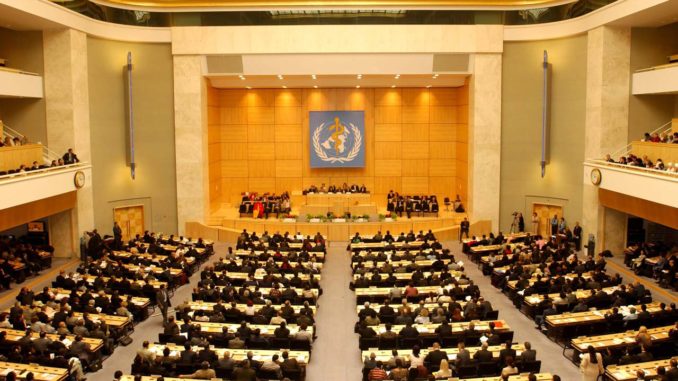
When the World Health Organisation (WHO) the other day pledged a yearly donation of 20 million doses of vaccines to eradicate yellow fever in Nigeria, it was at once a cause for celebration, a source of shame and an indictment of the nation’s health care system.
It is alright that the global body would assist the country in achieving the total vaccination of the populace, in line with the global Elimination of Yellow Epidemics (EYE) by 2026, but it is not edifying that the giant of Africa is shoddily grappling with this and many other diseases to the embarrassment of both the leadership and the citizenry.
Also, it is shameful that there are other health challenges needing the attention of the government and international bodies like WHO which are hardly acknowledged because Nigeria either does not have or fails to pursue a know national health agenda. The result is that so much noise is made over one disease that suits the programmes of the donors while more debilitating ones are left unattended to.
All diseases must be eradicated, no doubt. And equal attention must be given to them all in line with a well-honed agenda prepared by the Nigerian authorities. That way, the donors or international agencies would know which issues are urgent to address with a view to making their interventions more impactful.
Looking at the prevalence of yellow fever in Nigeria, from 2 July through 19 December 2017, 341 suspected cases of yellow fever were reported from 16 states, including Abia, Anambra, Borno, Edo, Enugu, Kano, Katsina, Kogi, Kwara, Kebbi, Lagos, Nasarawa, Niger, Oyo, Plateau, and Zamfara states. Howevere, six states – Kano, Kebbi, Kogi, Kwara, Nasarawa and Zamfara reported confirmed cases of yellow fever.
Furthermore, by the 19th of December, a total of 213 samples were tested in five laboratories in Nigeria. Of these 213 samples, the Nigerian laboratories tested 63 samples positive for yellow fever and there was one inconclusive result. Of 63 samples sent to the regional reference laboratory, Institut Pasteur de Dakar (IPD) for laboratory confirmation of yellow fever infection, 32 were positive, 24 were negative, and 7 results stood pending at that time.
In addition, on the 14th of September 2017, the Nigeria Centre for Disease Control (NCDC) informed WHO of a confirmed case of yellow fever in Kwara State. Meanwhile, the Federal Government may have begun the phase two of vaccination against the yellow fever in four states – Kogi, Kwara, Zamfara and Borno, where the country had recorded outbreaks of the disease.
While the yellow fever vaccine intervention by WHO is commendable, however, it is important to realise that since the beginning of 2018, a total number of 107 suspected Lassa fever cases have been recorded in ten States: Edo, Ondo, Bauchi, Nasarawa, Ebonyi, Anambra, Benue, Kogi, Imo and Lagos States. As at 21st January 2018, the total number of confirmed cases is 61, with 16 deaths recorded; while 10 health care workers have been infected in four states: Ebonyi – 7, Nasarawa – 1, Kogi – 1 and Benue – 1 with three deaths in Ebonyi State.
With the above data on yellow fever and Lassa fever, it is fair to say the two diseases have become major health concerns in Nigeria. While yellow fever is an acute viral haemorrhagic disease transmitted by mosquitoes, Lassa fever is also an acute viral haemorrhagic illness, transmitted to humans through contact with food or household items contaminated by infected rodents.
However, while there is vaccine for yellow fever, currently there is no vaccine that protects against Lassa fever. As such, containing Lassa fever lays only in prevention.
Obviously, the vaccine account of Lassa fever is in deficit. So, at the moment, this should be of major concern not just to Nigeria but to the global health body, WHO!
Therefore, instead of focusing on just donating vaccines for yellow fever in Nigeria, WHO should also lead a vaccine and treatment research, particularly now that the federal government recently said that Nigeria is set to resume local production of vaccines after 27 years. This should be aimed at having home-grown solutions that are sustainable and can help in prevention as well as to curtail spread.
Again, the Federal Ministry of Health (FMOH) should set evidence-based and contextual health agenda while working with multilateral organisations so that such cooperation with the government can be meaningful.
Therefore, the Federal Ministry of Health, in consultation with governments at other levels should work on a national health agenda and engage WHO with such because all diseases deserve attention!
END

Be the first to comment